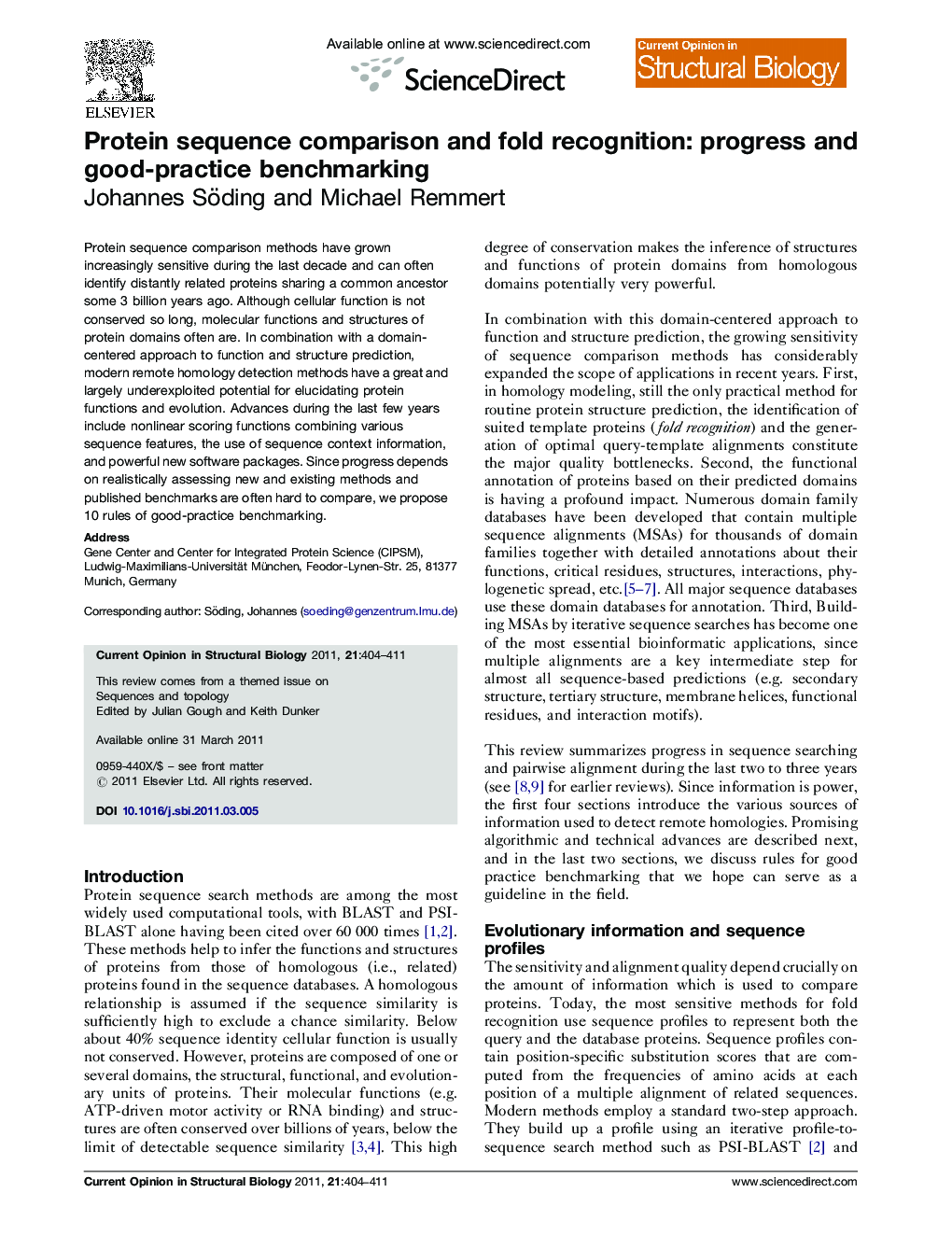| Article ID | Journal | Published Year | Pages | File Type |
|---|---|---|---|---|
| 1979159 | Current Opinion in Structural Biology | 2011 | 8 Pages |
Protein sequence comparison methods have grown increasingly sensitive during the last decade and can often identify distantly related proteins sharing a common ancestor some 3 billion years ago. Although cellular function is not conserved so long, molecular functions and structures of protein domains often are. In combination with a domain-centered approach to function and structure prediction, modern remote homology detection methods have a great and largely underexploited potential for elucidating protein functions and evolution. Advances during the last few years include nonlinear scoring functions combining various sequence features, the use of sequence context information, and powerful new software packages. Since progress depends on realistically assessing new and existing methods and published benchmarks are often hard to compare, we propose 10 rules of good-practice benchmarking.
► Functions and structures of protein domains can be inferred from remote homologs. ► Nonlinear combination of residue-based scores can improve sequence alignments. ► Taking sequence context into account improves sequence searches and alignments. ► New iterative HMM-based search tools are an attractive alternative to PSI-BLAST. ► 10 rules of good-practice can make benchmarks more objective and comparable.
